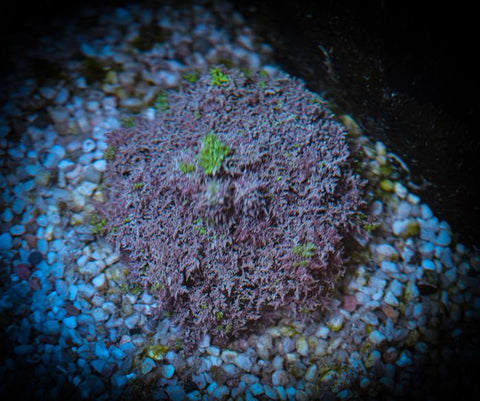Actinodendron is a Genus of sea anemones, commonly known as “Fire Anemones” or “Hell Fire Anemones.” They are appropriately named for the powerful sting that they can deliver. The anemone’s delicate foot is located on the bottom. The foot has simple muscle fibers that help the anemone move and anchor onto rocks. This species of anemone can grow up to 12 inches in diameter. Fire anemones are often found in shades of red, cream, brown, blue, green, and purple. Their tentacles are long and branched giving them a broccoli-like appearance. These particular anemones do not participate in the symbiotic relationship of hosting anemonefish that is often enjoyed by hobbyists, but will occasionally host certain species of shrimp or crabs. Most of your livestock, however, will avoid this particular anemone.

Fire Anemones require moderate to high lighting. We recommend between 150-250 PAR. These anemones also prefer moderate water flow to assist in filter feeding particles of food. Bear in mind that anemones will often move themselves until they find an area with their preferred amount of flow and lighting. Please do not attempt to glue your anemone down. They need to be able to move. That said, try to place your anemone in a low area away from wavemakers and pumps. An anemone that gets sucked in, chopped up, and blown all over your tank could be a real problem.

Through their symbiotic relationship with a photosynthetic algae, known as zooxanthellae, they receive many of their nutrients. Fire Anemones require targeted weekly feeding with meaty foods such as Mysis shrimp or frozen preparations. To maintain good health, monitor your water conditions regularly to avoid any major changes or swings in parameters. These anemones require good water quality.
When placing your Fire Anemone, please remember that these animals will move to a spot in the tank that they deem best. Be sure to introduce your anemone to an area away from wavemakers, pumps, and corals that could be damaged. Whenever handling your carpet anemone, it is recommended that you wear protective gloves. The sting from these anemones can cause skin ulcers and potentially lead to severe allergic reactions.
